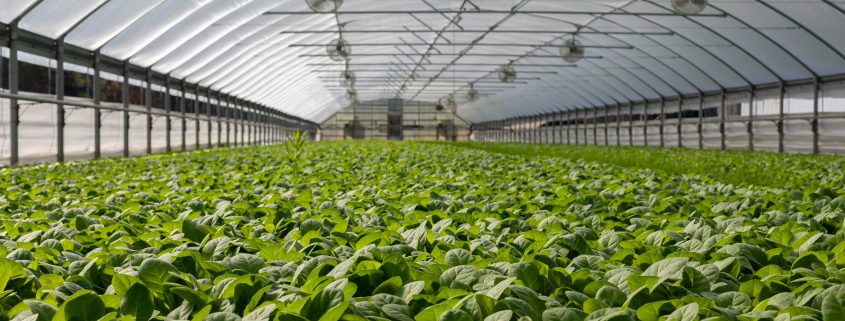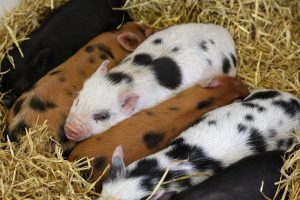IoT Powered Connected Farms
In today’s rapidly advancing world, the integration of technology and agriculture has transformed traditional farming practices into modern, digitally connected farms. With the advent of the Internet of Things (IoT), farmers now have access to a wealth of data, analytics, and real-time information about their crops and farming conditions. Among the leading platforms driving this revolution is thethings.io, empowering farmers to make data-driven decisions and optimize their agricultural operations.
Harnessing Data for Informed Decision-Making
One of the fundamental aspects of digitally connected farms powered by IoT is the ability to collect and utilize vast amounts of data. The integration of sensors, devices, and IoT platforms like thethings.io enables farmers to gather data on various aspects of their farming operations. For example, soil moisture sensors can monitor the water content in the soil, helping farmers determine the optimal irrigation schedule. Temperature and humidity sensors provide insights into environmental conditions, while light intensity sensors assist in optimizing greenhouse operations. Additionally, smart pest monitoring systems can detect pest activity, enabling farmers to take preventive measures.
By gathering this data in real time, farmers can have a comprehensive view of their crop’s health and make informed decisions regarding irrigation, fertilization, and pest control measures. The data collected from these sensors can be transmitted wirelessly to thethings.io platform, where it is processed and analyzed.
Analyzing Insights for Optimal Resource Allocation
The availability of data is only valuable if it can be transformed into actionable insights. The advanced analytics capabilities offered by thethings.io empower farmers to process the collected data and derive meaningful insights. By leveraging data visualization tools and customizable dashboards, farmers can monitor crop growth patterns, identify trends, and detect anomalies.
For example, by analyzing soil moisture data over time, farmers can identify areas of their fields that consistently suffer from dryness or excessive moisture. This information allows them to optimize irrigation practices and ensure uniform water distribution, thereby improving crop yields. Similarly, by tracking temperature and humidity data, farmers can identify climate patterns that influence crop growth and adjust their cultivation practices accordingly.
Advanced analytics can also help farmers optimize resource allocation. By examining historical data, farmers can identify optimal planting and harvesting times, leading to better crop yields and reduced losses. Furthermore, analytics can assist in identifying potential risks and providing early warnings. For instance, if certain weather conditions are associated with disease outbreaks, farmers can take preventive measures to protect their crops.
Predictive Analytics for Improved Planning
Predictive analytics takes data analysis a step further by utilizing machine learning algorithms to forecast future outcomes. By analyzing historical data and environmental conditions, thethings.io can predict crop yields, disease outbreaks, and other crucial factors. This empowers farmers to plan their operations effectively, maximize productivity, and minimize losses.
For instance, predictive analytics can help farmers determine the optimal time to plant their crops based on weather patterns and historical data. By leveraging this information, farmers can make more accurate predictions about the yield potential of their crops and plan their resources accordingly. Additionally, predictive analytics can assist in predicting disease outbreaks by analyzing environmental conditions and historical disease patterns. This allows farmers to take preemptive measures, such as applying appropriate pesticides or implementing crop rotation strategies.
Seamless Integration for Holistic Farm Management
Digitally connected farms powered by IoT thrive on the seamless integration of various components within the farming ecosystem. The integration of thethings.io with other farm management systems, weather forecasts, market pricing platforms, and more, provides farmers with a holistic view of their operations.
By integrating weather forecast data, farmers can proactively plan for adverse weather conditions and adjust their farming practices accordingly. They can optimize resource allocation, such as adjusting irrigation schedules based on rainfall predictions. Additionally, integration with market pricing platforms enables farmers to stay updated on market trends, empowering them to make informed decisions regarding crop selection and sales strategies.
Real-Time Alerts and Notifications
Real-time alerts and notifications play a critical role in ensuring that farmers stay informed about critical events and potential issues. The data collected from various sensors and devices is analyzed in real-time, allowing for immediate detection of anomalies or deviations from expected parameters.
For example, if a sudden drop in soil moisture is detected, the farmer receives an alert on their mobile device or through a web interface. This prompt notification enables the farmer to take immediate action, such as adjusting irrigation or investigating potential equipment malfunctions. Similarly, if the temperature in a greenhouse rises beyond a certain threshold, an alert is triggered, allowing farmers to intervene and prevent damage to their crops.
Challenges and Considerations
While digitally connected farms powered by IoT offer tremendous benefits, there are some challenges and considerations that farmers should be aware of. Firstly, the implementation of IoT technologies requires an initial investment in hardware, sensors, and connectivity infrastructure. Farmers need to carefully assess their budget and determine the cost-effectiveness of implementing IoT solutions.
Additionally, data security and privacy are crucial aspects that need to be addressed. As data is transmitted and stored in the cloud, farmers must ensure that appropriate measures are in place to protect their sensitive information. Data encryption, access controls, and secure communication protocols are essential to safeguarding the integrity and confidentiality of farm data.
Moreover, the interoperability of different IoT devices and platforms can be a challenge. Farmers should choose solutions that offer compatibility with a wide range of sensors and devices, ensuring seamless integration and data exchange.
The Future of Digitally Connected Farms
The integration of IoT technologies in agriculture represents a significant paradigm shift in farming practices. Further enhancements and innovations can be expected as technology advances in the field of digitally connected farms.
Artificial intelligence (AI) combined with IoT holds potential for growth. AI algorithms analyze large datasets, identify patterns, and provide more accurate predictive models. AI-powered image recognition systems can detect and classify pests or diseases by analyzing images captured by drones or cameras, aiding in early detection and targeted treatment.
Advancements in edge computing and analytics allow for real-time processing at the edge of the network, reducing latency and dependency on cloud infrastructure. This enables faster decision-making critical for time-sensitive farming operations.
Integration of IoT with emerging technologies like blockchain enhances traceability and transparency in the agricultural supply chain. Blockchain technology securely records and tracks each stage of the production process, ensuring food safety and quality.
Digitally connected farms powered by IoT, such as those enabled by thethings.io, have the potential to revolutionize the agriculture industry. Through the collection and analysis of data, farmers can make informed decisions, optimize resource allocation, and improve crop yields. The integration of IoT technologies with advanced analytics, predictive modelling, and seamless data integration opens up new possibilities for sustainable, efficient, and data-driven farming practices.
However, it is essential for farmers to carefully evaluate their specific needs, consider the challenges, and choose IoT solutions that best fit their requirements. With continued advancements in technology and increased adoption of IoT in agriculture, the future holds great promise for digitally connected farms, paving the way for a more productive and sustainable agricultural sector.






